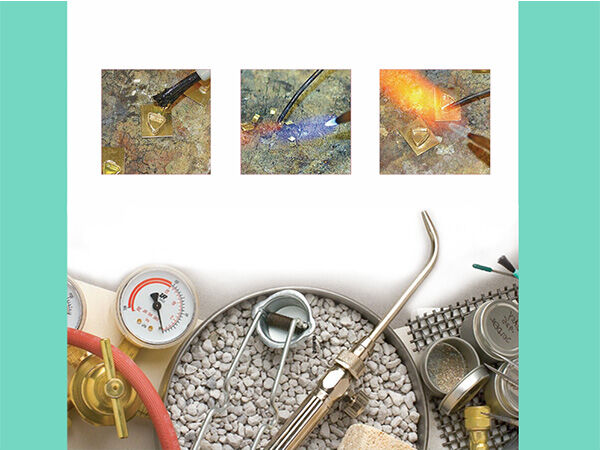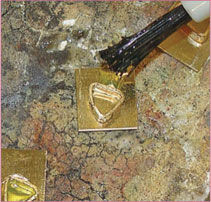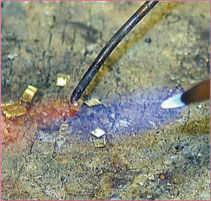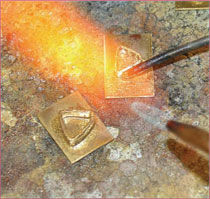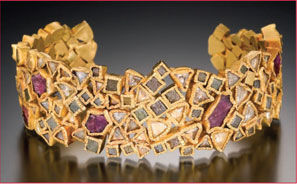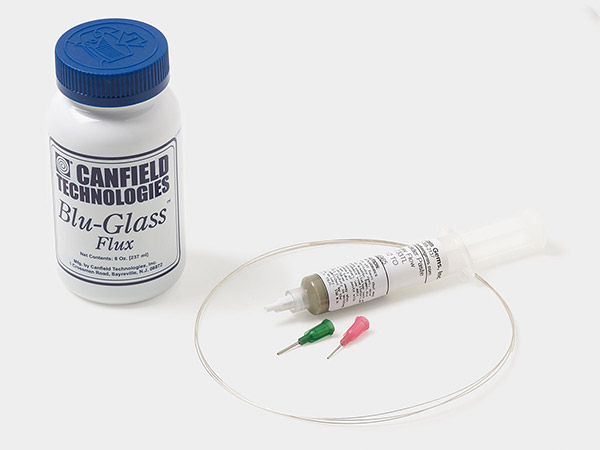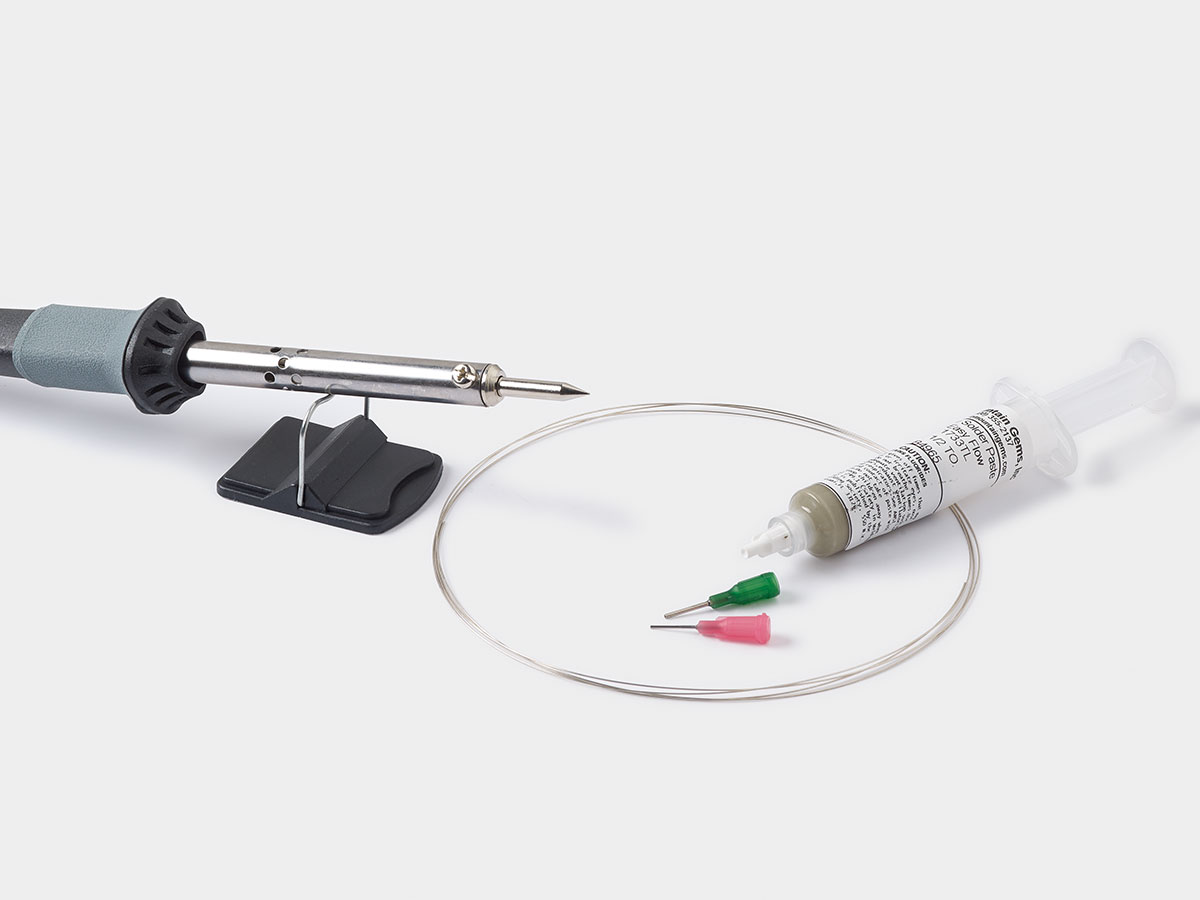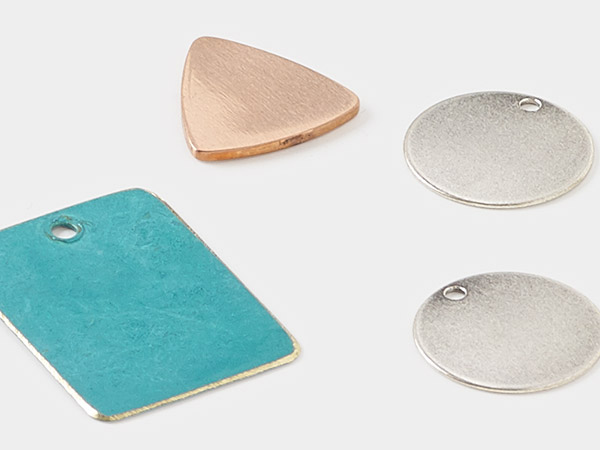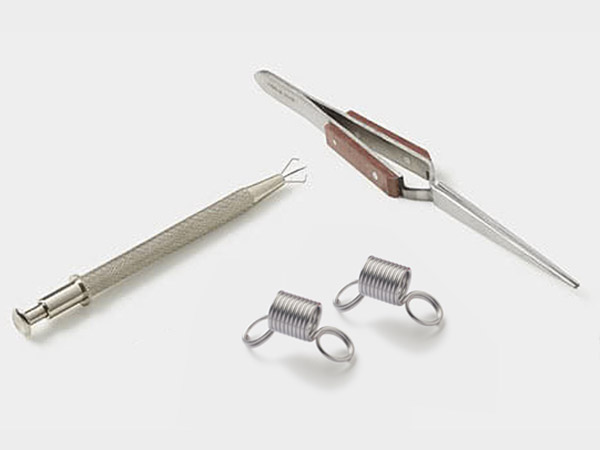Soldering Savvy
by Helen I. Driggs, Senior Editor, Lapidary Journal Jewelry Artist magazine
Courtesy of Jewelry Making Daily
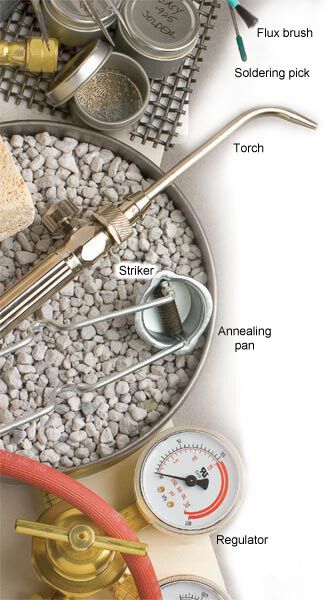
Permit me a moment of political incorrectness: soldering is what separates the men from the boys. Man or woman, it's the thing that takes you into a whole new world as a metals artist. Soldering will take you on amazing journeys in three dimensional design, and metal fabrication becomes a whole new animal when you can connect things on a molecular level. Because of the technical requirements of soldering, every metalsmith develops a unique work method, building a repertoire of tips, tricks, and processes. Because of this, I plan to revisit this topic in the future. For now, Todd Reed was gracious enough to provide me with a somewhat stream of consciousness list of his favorite soldering methods. Here's what he told me.
Todd Reed
I cannot think of a life without soldering, for better or for worse . . . this function of the goldsmith is most important, and can make life easy, or if you are not so lucky, a hell realm. I do not have tricks, only tips.
I solder using hard solders always, but as a last resort, I will use medium solder. Using high temps does a number of things for the metal purity and your skill level, but also teaches the most important detail of soldering--torch control.
Identify the hottest part of the flame and use it. Get metal hot as fast as possible. With silver you do not have to actually heat the whole piece as we are taught, just go right for it, you know the solder will flow to the heat, so use this principle at work. I use liquid flux so I don't get too much glass on my piece--I find this will actually inhibit the solder flow. When using 15 liquid flux on a flat piece of metal preheat the metal--this will allow the flux to stick. Keep the metal clean, but most important is to use the heat from the torch to get what you want as fast as you can get it. I think one tip is to start to solder in a more proactive way--I see a lot of passive soldering out there.
For example: make a bezel. Wrap the bezel strip, heat the seam, and using solder pick, push a ball of solder into the joint. Cool, sand the bezel bottom, and prepare to solder to the back sheet. Instead of putting bezel on sheet, fluxing, balancing six tiny pallions of solder against the inside wall, slowly heating, praying nothing moves and at the same instant the solder flows down and not up . . . here is the active part: instead of all this, put the bezel on the plate, flux, heat the piece and while heating, pick up a ball of hard solder. When the plate and bezel reach the good temperature, push a ball of solder on the outside of the seam. You will be surprised at how neat, clean, and fast this will work. If the solder does not flow all the way around, pick up another ball while everything is still hot and push that in, too.
Tip #1: Cut larger pieces of solder off a sheet or wire! There is a place for the microchip of solder, but in fabrication, a bit more will get the job done more efficiently than going back in many times with tiny bits. Every time you heat the piece, solder will absorb into it, exposing the joint more and eroding its quality and the purity of metal.
Tip #2: Torch control! Get in and out quick--clean and efficient.
Tip #3: Try to never go past one step until the previous step has been completed, meaning, try hard to educate your eye and make sure a soldered seam is good--no pits, no gaps, no underflow, no overflow. Learn to identify these issues early so you don't have to go back in and solder again.
Tip #4: Your solder seam is only as thick as the metal on the seam--when filing for cleanup, do not weaken the joint by overfiling or overfinishing. When possible save all finishing of solder joints until all soldering is complete.
Todd Reed has been working in the jewelry industry for almost 16 years, fabricating pieces in 18 karat gold, platinum, and silver. He started working with raw diamonds as a way to question the fascination with diamonds used as a status symbol in our current society. By incorporating the uncut diamond in his work he hopes to make aware the beauty and raw elegance of the diamond in its most pure form. Todd's work has been featured in many of the finest books on goldsmiths and art jewelry as well as numerous international trade and consumer publications.
Have a question regarding this project? Email Customer Service.
Copyright Permissions
All works of authorship (articles, videos, tutorials and other creative works) are from the Fire Mountain Gems and Beads® Collection, and permission to copy is granted for non-commercial educational purposes only. All other reproduction requires written permission. For more information, please email copyrightpermission@firemtn.com.
